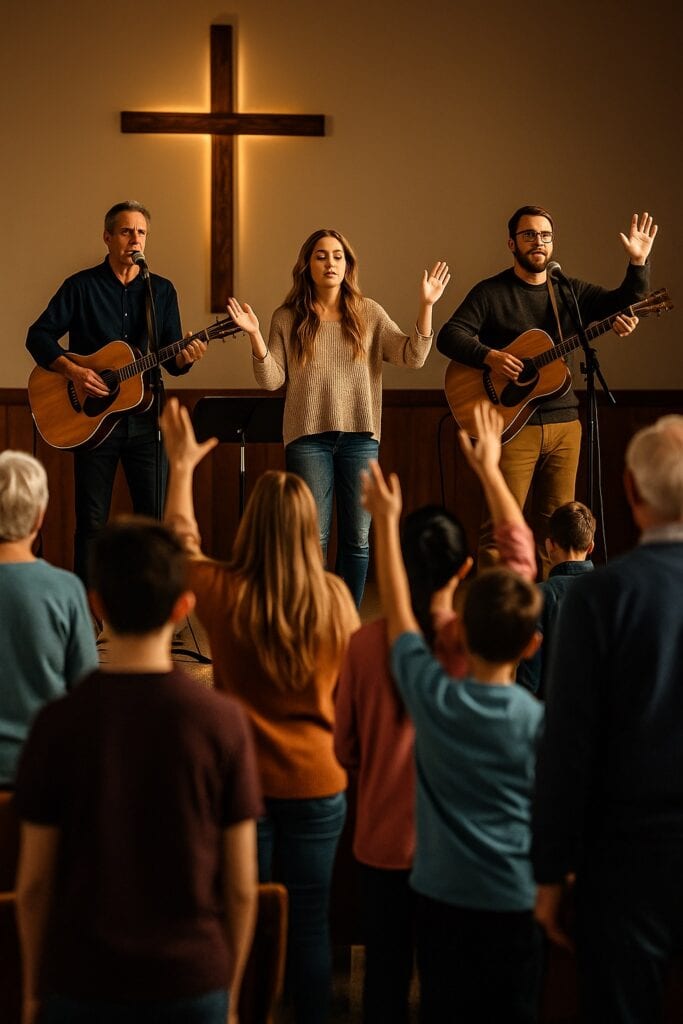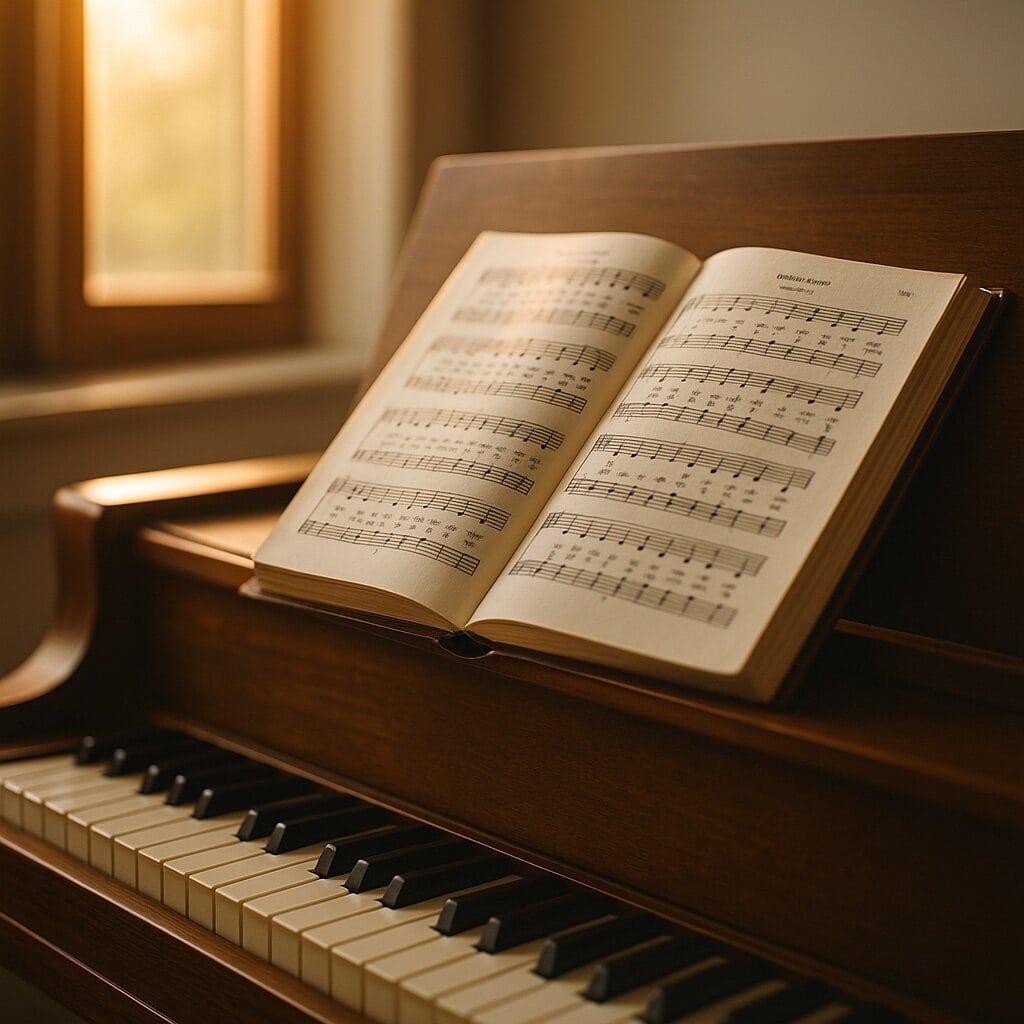The Songs We Still Need to Sing: What the Old Hymns Still Teach Us
There’s something sacred about the songs that stay with us. One moment you’re humming along to a new worship chorus in church, and the next, an old hymn slips quietly into your mind—words you haven’t sung in years but somehow still know by heart.
It’s not that the hymns have disappeared. Many churches now weave them into contemporary worship sets or revive them with fresh arrangements. But in many places, they’ve become less common. That isn’t always bad; the Bible tells us to sing a new song to the Lord. New music is part of a living, growing faith. Yet we also need the songs that have carried believers through the centuries. Together, they tell the whole story of God’s people—past, present, and future.
This reflection isn’t about choosing sides. It’s about remembering that both old hymns and new songs have their place when they bring glory to God.
Why the Old Hymns Faded
As a child and teenager, I was surrounded by the traditional church music- four-part harmony, sometimes even shaped-note hymnals, and congregations who sang many of them from memory. Those melodies carried truth, but musically, the church world I knew had stopped growing stylistically. Meanwhile, the world around us was changing fast. Rock, folk, and country were reshaping the sound of America.
For those of us growing up in that environment, we didn’t think hymns were bad—they were solid and deeply rooted in Scripture—but we longed for a broader sound that would speak to younger hearts. As modern instruments and recording styles took over popular music, many of us began forming Christian bands and writing songs with the same purpose as the hymn writers before us: to lift up Christ and reach our generation.
The Jesus Movement in California during the late 1960s. Young believers—many of them former hippies—found faith in Christ and began bringing guitars into church, writing simple, heartfelt worship songs. The sound was different, but the heart was the same. By 1977, when I became involved in early Contemporary Christian Music, that wave had spread across the country.
I never stopped liking the hymns, and I never saw the new songs as competition. Both served the same purpose: to glorify God and remind us of His grace. Even now, nearly fifty years later, I find myself loving both. When a congregation blends in old hymns along with newer songs I enjoy it – one voice, many generations, worshiping one Lord.
Why New Songs Matter Too
“Sing to him a new song; play skillfully, and shout for joy.”
— A call to bring fresh praise and joyful excellence before the Lord. Psalm 33:3 (NIV)“Sing to the Lord a new song; sing to the Lord, all the earth. Sing to the Lord, praise his name; proclaim his salvation day after day.” Psalm 96:1–2 (NIV)
“Praise the Lord. Sing to the Lord a new song, his praise in the assembly of his faithful people.” Psalm 149:1 (NIV)
Scripture gives us permission—actually, a command—to sing a new song to the Lord. God delights in creativity that springs from a thankful heart. Every generation should have its own expressions of praise, written in the language and sound of its time.
Modern worship songs often capture immediacy: prayers spoken in the moment, cries of surrender, joy, and faith. They remind us that God isn’t just the God of history—He’s alive and moving right now. Some of today’s writers craft deeply biblical lyrics that connect with the heartbeat of our age while holding true to eternal truth.
So it’s not about old or new—it’s about whether the song honors God. The test of any worship music, traditional or contemporary, is this: does it lift our eyes to Christ, proclaim His Word, and lead us toward obedience? When it does, it’s a good song, no matter when it was written.

What the Old Hymns Still Give Us
When some allowed the old hymns to become a bit faded from regular use, we lost some foundation songs. The great hymn writers were theologians in verse. They turned doctrine into melody so that truth could live in the heart as well as the mind. When we sang their words, we were memorizing Scripture wrapped in poetry.
Hymns also connected generations. Children stood beside grandparents, both singing the same familiar lines. Even today, older believers may light up when the first verse of “Great Is Thy Faithfulness” begins. For many, those songs were companions through joy and sorrow—sung at weddings, funerals, and revival meetings alike.
What’s remarkable is how these lyrics resurface in our darkest hours. I’ve had moments of discouragement when an old hymn came back to mind, almost like the Holy Spirit was reminding me through music. “Jesus, Jesus, how I trust Him,” or many others. Those aren’t just memories; they’re anchors. They remind us that the same God who held our grandparents still holds us today.
Why Both Are Needed
The healthiest churches don’t draw lines between eras—they build bridges between them. A good worship service can include a centuries-old hymn and a song written last week. Each brings something the other cannot replace.
Old hymns often give us depth: language that has stood the test of time, written in the valleys and victories of faith. New songs give us immediacy: fresh language for what God is doing here and now. One reaches back to the faithfulness of yesterday; the other looks forward to what God is still doing.
When we bring them together, worship becomes whole. It’s not about style—it’s about story. The old and new songs together remind us that God is worthy of praise from every generation, in every language, and through every instrument that can make a joyful noise.
Don’t misunerstand me. In the churches i had been a part of or helped led in the past 35+ years, it wasn’t equally balanced between traditional hymns or styles and more modern or contemporary. some places i served were more heavily hymn or traditionally based in music with new songs scatter ed in. And the church in which I served the longest did the majority of moern praise an worship but would harken back and pull up the old hymns of the faith and recognized their importance.
Conclusion
Music in the church has never been static—and it was never meant to be. From the psalmists’ laments to the hymns of the early church, every generation has lifted its own melody to the same faithful God. That’s the beauty of worship: it changes in sound but never in purpose.
When we sing the old hymns, we’re joining a great chorus of believers who found strength in the same Savior we trust today. Those songs have carried God’s people through war and revival, joy and sorrow. They remind us of truths that don’t bend with time—grace that still saves, mercy that still holds, faith that still stands. In the middle of pain, I often find those words rising again, like prayers I didn’t even realize were waiting on the edge of memory. They come back because they’re true.
And yet, God also calls us to lift new songs—expressions that rise from fresh gratitude and personal encounters with His goodness. Every generation has its own way of telling the story of redemption. New songs remind us that God is not only the Author of our past but the Composer of our present and future. They speak to the heart of a living faith, one that still breathes, still reaches, still changes lives.
The beauty is that we don’t have to choose between them. Hymns give us depth; new songs give us immediacy. Together, they form a bridge between generations—a sound that reaches backward and forward at the same time. The healthiest worship is not bound to a decade but anchored in the cross.
So let’s keep singing. Let’s keep writing. Let’s keep celebrating every song that magnifies the Lord. Because in heaven’s choir, the voices won’t be divided by century or style. Every song that ever glorified Jesus will become part of one endless, unbroken hallelujah.





Leave a Reply